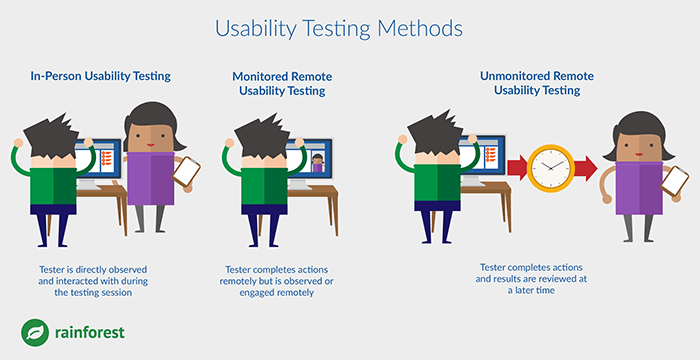User interviews and market research may be effective in gathering general insights into the needs and wants of audiences, however, these methods still pose limitations in terms of gathering product data. This is where user testing or usability testing comes in. Usability testing is one of the core UX research methods which focuses on qualitative feedback and observation insights. The process serves to answer key questions such as:
- Does it match what the users need?
- Are users able to understand what the product does?
- Can users navigate through the product?
It works with other UX methods such as UX prototyping, in a process that tests a product’s functionality and ease-of-use through user testers. These testers are provided with certain product-related tasks to complete while the researcher observes their actions, such as:
- Navigate your way through the map.
- How do you view a friend’s feed?
- Access your profile page.
Usability testing can be carried out at various stages, from using in early design stages (lo-fi prototypes) to late stage testing (finished product). It can also be individually used to test new features for continued iterations of a finished product.



